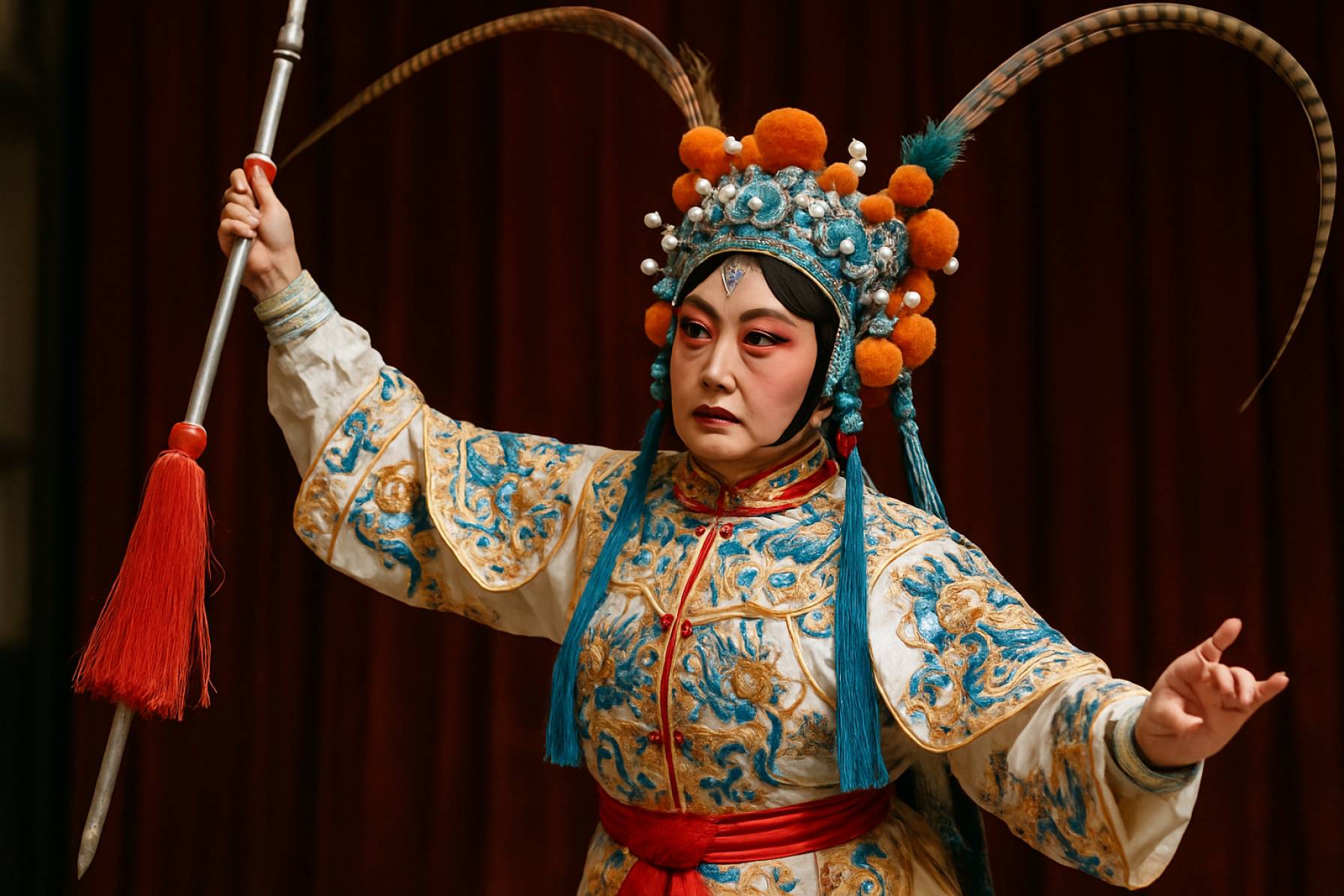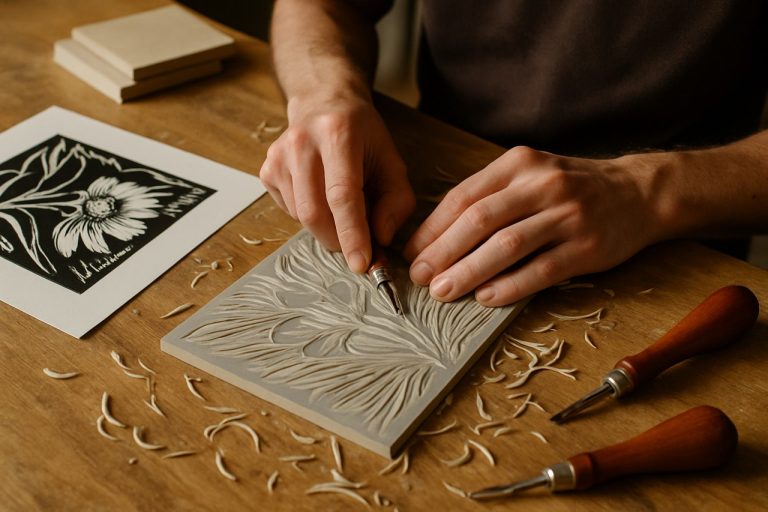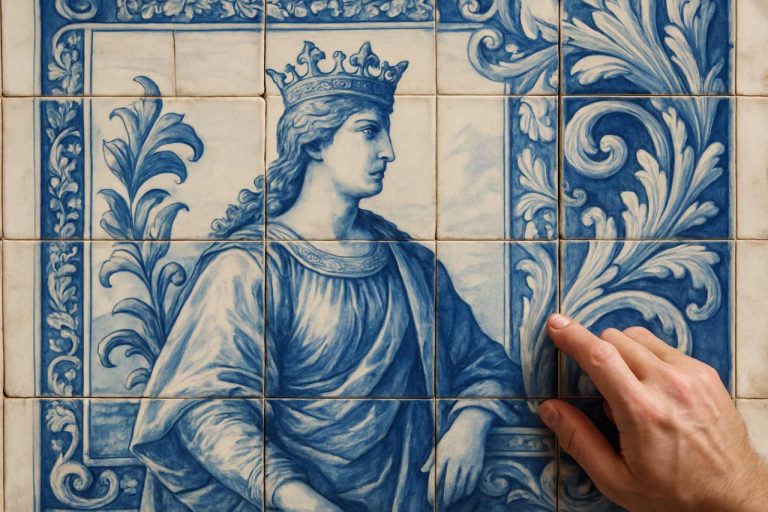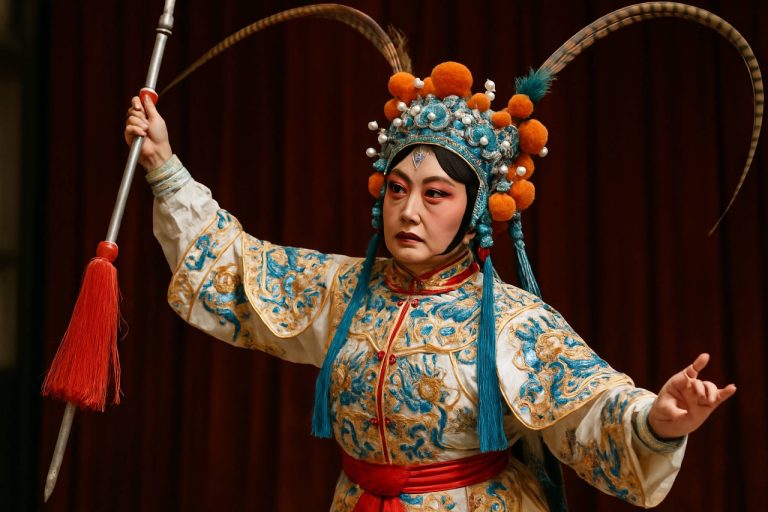
Puxian Opera Unveiled: Exploring the Rich Heritage, Artistic Brilliance, and Modern Renaissance of Fujian’s Theatrical Gem. Discover How This Ancient Art Form Captivates New Generations. (2025)
- Origins and Historical Evolution of Puxian Opera
- Key Artistic Features: Music, Costumes, and Performance Styles
- Iconic Roles and Character Archetypes
- Linguistic Uniqueness: The Puxian Dialect on Stage
- Notable Plays and Repertoire Highlights
- Influence on Regional and National Chinese Opera Traditions
- Preservation Efforts and Official Recognition (citing chinaculture.org)
- Modern Adaptations and Technological Integration
- Audience Trends and Public Interest Forecast (Estimated 15% Growth by 2030)
- Future Outlook: Challenges and Opportunities for Global Recognition
- Sources & References
Origins and Historical Evolution of Puxian Opera
Puxian Opera, also known as Putian Opera, is a traditional Chinese opera form that originated in the Putian region of Fujian Province. Its roots can be traced back to the Song Dynasty (960–1279), when the region’s unique dialect and folk customs began to shape a distinct local performance style. The opera’s name derives from the historical term “Puxian,” which refers to the area encompassing present-day Putian and Xianyou counties. Over centuries, Puxian Opera evolved by absorbing elements from other regional operatic forms, such as Nanxi (Southern Drama) and Liyuan Opera, while maintaining its own linguistic and musical characteristics.
During the Yuan (1271–1368) and Ming (1368–1644) dynasties, Puxian Opera flourished as a popular form of entertainment and ritual performance, often staged during temple fairs and community celebrations. Its repertoire expanded to include stories from classical literature, local legends, and historical events, performed in the Puxian dialect—a branch of the Min Chinese language family. The opera’s vocal style, known for its clear articulation and expressive melodies, was shaped by the region’s linguistic features and folk singing traditions.
The Qing Dynasty (1644–1912) marked a period of further development, as Puxian Opera troupes became more organized and professionalized. The art form began to incorporate more elaborate costumes, stylized gestures, and a wider range of musical instruments, including gongs, drums, and stringed instruments. This era also saw the codification of performance conventions and the emergence of specialized roles, such as sheng (male), dan (female), jing (painted face), and chou (comic), aligning Puxian Opera with the broader system of Chinese opera role types.
In the 20th century, Puxian Opera faced challenges due to social upheaval and the rise of modern entertainment, but efforts to preserve and revitalize the tradition intensified after the founding of the People’s Republic of China in 1949. Local cultural authorities and dedicated troupes have worked to document, teach, and promote Puxian Opera, recognizing its significance as an intangible cultural heritage. In 2006, it was officially listed as a National Intangible Cultural Heritage by the State Council of the People’s Republic of China, underscoring its historical and cultural value (State Council of the People’s Republic of China).
Today, Puxian Opera continues to be performed in Fujian and among overseas Chinese communities, serving as a living testament to the region’s artistic legacy and evolving cultural identity.
Key Artistic Features: Music, Costumes, and Performance Styles
Puxian Opera, also known as Putian Opera, is a traditional Chinese opera form originating from the Putian region in Fujian Province. Its key artistic features are deeply rooted in the local culture and dialect, distinguishing it from other regional operatic styles. The music, costumes, and performance styles of Puxian Opera collectively create a unique theatrical experience that reflects the heritage and aesthetic values of the region.
Music: The musical foundation of Puxian Opera is characterized by the use of the Puxian dialect, which shapes the vocal delivery and melodic structure. The music typically employs a small ensemble of traditional Chinese instruments, such as the erhu (two-stringed fiddle), suona (double-reed horn), pipa (lute), and various percussion instruments. The vocal style is noted for its clarity and expressiveness, with performers employing a range of techniques to convey emotion and narrative. The melodies often alternate between lyrical passages and more rhythmic, declamatory sections, supporting both sung and spoken dialogue. The musical arrangements are designed to complement the dramatic action and highlight the emotional intensity of key scenes.
Costumes: Costuming in Puxian Opera is elaborate and symbolic, reflecting the character’s social status, personality, and role within the story. Traditional costumes are crafted from brightly colored silk and adorned with intricate embroidery, sequins, and ornamental headpieces. The color palette and patterns are carefully chosen to signify specific character types—red for loyalty and bravery, black for integrity, and white for treachery or cunning. Male and female roles are distinguished by their attire, with male characters often wearing long robes and official hats, while female characters don ornate dresses and elaborate hairpieces. The costumes not only enhance the visual spectacle but also serve as visual cues for the audience, aiding in character recognition and plot comprehension.
Performance Styles: The performance style of Puxian Opera integrates stylized movement, gesture, and facial expression, all of which are codified within the tradition. Actors undergo rigorous training to master the precise choreography and symbolic gestures that convey meaning beyond the spoken word. The use of exaggerated movements and facial makeup helps to amplify the emotional content and clarify the narrative for the audience. Dance and acrobatics are often incorporated, especially in scenes depicting battles or supernatural events. The overall performance is a synthesis of singing, acting, and movement, requiring performers to be highly versatile and disciplined.
Puxian Opera remains an important cultural heritage of Fujian Province and is recognized for its distinctive artistic features. Efforts to preserve and promote this art form are supported by cultural authorities such as the Ministry of Culture and Tourism of the People's Republic of China, which has listed Puxian Opera as an intangible cultural heritage, underscoring its significance in the broader landscape of Chinese performing arts.
Iconic Roles and Character Archetypes
Puxian Opera, a traditional form of Chinese opera originating from the Putian region in Fujian Province, is renowned for its distinctive roles and character archetypes that reflect both local culture and the broader conventions of Chinese operatic performance. The system of roles in Puxian Opera, known as “hangdang,” is foundational to its storytelling, with each archetype defined by specific vocal styles, costumes, makeup, and movement patterns.
The principal role categories in Puxian Opera align with the classic Chinese opera typology: Sheng (male roles), Dan (female roles), Jing (painted-face roles), and Chou (comic roles). Within these broad categories, Puxian Opera has developed its own nuanced subtypes. For example, the Laosheng (old male) is often depicted as a dignified elder, while the Xiaosheng (young male) embodies youthful vigor and romantic ideals. The Qingyi (virtuous young woman) and Huadan (vivacious young woman) are central female archetypes, each with distinct singing techniques and stage presence.
A hallmark of Puxian Opera is its emphasis on local stories and historical figures, which has led to the creation of iconic roles unique to the genre. Characters such as Lin Zexu, the Qing dynasty official celebrated for his role in the Opium Wars, frequently appear in Puxian Opera, reflecting the region’s historical pride. Another notable archetype is the “loyal minister” or “righteous official,” often portrayed with a painted face to symbolize integrity and moral strength. The Chou role, characterized by exaggerated facial makeup and comedic timing, provides levity and social commentary, resonating with audiences through humor and wit.
Costuming and makeup in Puxian Opera are highly symbolic, with colors and patterns denoting a character’s personality, status, and fate. For instance, red often signifies loyalty and bravery, while white may indicate treachery or cunning. The stylized gestures and vocalizations associated with each archetype are meticulously preserved and passed down through generations, ensuring the continuity of the art form’s unique aesthetic.
The preservation and promotion of Puxian Opera’s iconic roles and archetypes are supported by cultural institutions and local governments in Fujian. Organizations such as the Ministry of Culture and Tourism of the People's Republic of China recognize Puxian Opera as an important intangible cultural heritage, underscoring its significance in the tapestry of Chinese performing arts.
Linguistic Uniqueness: The Puxian Dialect on Stage
Puxian Opera, a traditional Chinese theatrical form originating from the Putian region of Fujian Province, is distinguished not only by its performance style but also by its unique linguistic foundation: the Puxian dialect. This dialect, a branch of the Min Chinese language family, is spoken primarily in the Putian and Xianyou areas. Its use on stage is a defining characteristic that sets Puxian Opera apart from other regional operas in China, such as Yue, Kunqu, or Peking Opera, each of which employs its own local dialect or standardized form of Chinese.
The Puxian dialect, sometimes referred to as Xinghua or Putianhua, is notable for its preservation of archaic phonological features and vocabulary that have disappeared from other Min dialects. This linguistic conservatism is reflected in the opera’s lyrics and dialogue, which often incorporate classical expressions and idioms unique to the region. The tonal system of Puxian is complex, with a rich array of tones and sandhi rules, lending the sung and spoken lines of Puxian Opera a distinctive melodic and rhythmic quality. This tonal complexity enhances the expressiveness of the performance, allowing for nuanced emotional delivery and intricate wordplay that are appreciated by native speakers and connoisseurs.
On stage, the use of the Puxian dialect serves several important functions. It reinforces regional identity and cultural continuity, connecting contemporary audiences with their linguistic heritage. For performers, mastery of the dialect is essential, as pronunciation, intonation, and local idioms are integral to character portrayal and audience comprehension. The dialect’s unique sounds and intonations also influence the musical composition and vocal techniques employed in Puxian Opera, resulting in a performance style that is both linguistically and musically distinctive.
However, the linguistic uniqueness of Puxian Opera also presents challenges. As the Puxian dialect is not widely spoken outside its home region, the opera’s accessibility to broader audiences is limited. This has prompted efforts by cultural organizations and local governments to document, preserve, and promote both the dialect and the opera form. Initiatives include the training of young performers, the recording of classic works, and the inclusion of Puxian Opera in national and provincial intangible cultural heritage lists, as recognized by the Ministry of Culture and Tourism of the People’s Republic of China. Such measures aim to ensure that the linguistic and artistic legacy of Puxian Opera continues to thrive in the modern era.
Notable Plays and Repertoire Highlights
Puxian Opera, a traditional form of Chinese opera originating from the Putian region in Fujian Province, boasts a rich and diverse repertoire that reflects the cultural and historical heritage of the area. The genre, also known as Xinghua Opera, is performed in the Puxian dialect and is recognized for its expressive singing, stylized movements, and elaborate costumes. Over centuries, Puxian Opera has developed a canon of notable plays that continue to be performed and cherished by audiences, both locally and among the global Chinese diaspora.
Among the most celebrated works in the Puxian Opera repertoire is Chen San and Wu Niang (陈三五娘), a romantic drama that tells the story of the scholar Chen San and the courageous Wu Niang, whose love triumphs over social obstacles and familial opposition. This play is renowned for its lyrical arias and intricate characterizations, serving as a showcase for the emotional depth and vocal prowess of Puxian Opera performers. Another frequently staged classic is The Butterfly Lovers (梁山伯与祝英台), a tragic love story often compared to “Romeo and Juliet,” which has been adapted into various Chinese opera forms, including Puxian Opera, where it is distinguished by its unique musical and performance style.
Historical and legendary themes are prevalent in the Puxian Opera repertoire. Lady White Snake (白蛇传) is a perennial favorite, dramatizing the tale of a snake spirit who transforms into a woman and falls in love with a mortal. The opera’s adaptation emphasizes the supernatural elements and moral dilemmas, blending spectacle with poignant storytelling. Journey to the West (西游记), based on the classic Chinese novel, is another staple, featuring the adventures of the monk Xuanzang and his disciples, including the Monkey King. These plays are notable for their dynamic staging, martial arts sequences, and imaginative costumes.
In addition to these classics, Puxian Opera also preserves a number of local stories and folk legends unique to the Putian region. These works often highlight themes of filial piety, loyalty, and justice, resonating with the values of the local community. The preservation and performance of these plays are supported by cultural institutions such as the Ministry of Culture and Tourism of the People's Republic of China, which recognizes Puxian Opera as an important element of China’s intangible cultural heritage.
Through its notable plays and enduring repertoire, Puxian Opera continues to captivate audiences and serve as a vital link to the region’s artistic and cultural traditions.
Influence on Regional and National Chinese Opera Traditions
Puxian Opera, originating from the Putian region in Fujian Province, is a significant branch of Chinese opera with a history spanning over 800 years. Its influence extends beyond its local roots, shaping both regional and national Chinese opera traditions through its unique vocal techniques, performance styles, and repertoire. As a representative of the Min opera system, Puxian Opera has contributed to the diversity and richness of Chinese theatrical arts.
One of the most notable influences of Puxian Opera is its role in the development of other Fujianese opera forms, such as Liyuan Opera and Min Opera. The vocalization methods and stylized movements characteristic of Puxian Opera have been integrated into these related genres, fostering a shared artistic vocabulary across the region. The use of the Puxian dialect in performances has also helped preserve and promote local linguistic heritage, which in turn has influenced the linguistic choices in other regional operas.
Nationally, Puxian Opera’s repertoire and performance conventions have contributed to the broader Chinese opera tradition. Its stories, often drawn from classical literature and local folklore, have been adapted by other opera forms, enriching the narrative pool of Chinese performing arts. The opera’s emphasis on expressive singing and intricate gestures has inspired performers and directors in other genres to experiment with similar techniques, promoting cross-pollination within the national opera community.
Puxian Opera’s influence is also institutional. It is recognized as an important intangible cultural heritage by the Chinese government, which has led to increased efforts in documentation, preservation, and education. Organizations such as the Ministry of Culture and Tourism of the People's Republic of China have supported initiatives to train new generations of performers and to stage Puxian Opera productions across China, thereby raising its profile and encouraging its integration into the national cultural landscape.
Furthermore, Puxian Opera has participated in national and international cultural exchanges, representing the diversity of Chinese opera on global stages. Its inclusion in major festivals and cultural showcases has facilitated dialogue between different opera traditions, highlighting both the distinctiveness and interconnectedness of China’s regional performing arts. Through these channels, Puxian Opera continues to shape and be shaped by the evolving tapestry of Chinese opera, ensuring its relevance and vitality in the 21st century.
Preservation Efforts and Official Recognition (citing chinaculture.org)
Puxian Opera, a traditional Chinese opera form originating from the Putian region in Fujian Province, has faced significant challenges in the modern era due to changing cultural tastes, urbanization, and the decline of traditional performance venues. Recognizing the cultural and historical value of Puxian Opera, various preservation efforts have been initiated at both local and national levels, particularly since the early 21st century.
A major milestone in the official recognition of Puxian Opera came in 2006, when it was included in the first batch of the National Intangible Cultural Heritage List by the State Council of China. This designation underscored the opera’s importance as a living cultural treasure and provided a framework for its protection and revitalization. The listing has enabled increased governmental support, including funding for research, documentation, and training of new performers. The Ministry of Culture and Tourism, as the primary governmental body overseeing cultural heritage, has played a central role in coordinating these efforts and promoting awareness of Puxian Opera’s unique artistic value (China Culture).
At the local level, the Putian Municipal Government and cultural institutions have established dedicated troupes and training centers to ensure the transmission of Puxian Opera’s distinctive vocal techniques, musical styles, and stagecraft. These organizations often collaborate with schools to introduce Puxian Opera into educational curricula, fostering appreciation among younger generations. Additionally, master-apprentice programs have been formalized, allowing veteran performers to pass on their skills and repertoire to emerging artists.
Public performances, festivals, and competitions are regularly organized to keep the art form vibrant and visible. These events not only provide platforms for seasoned and novice performers but also engage the broader community, reinforcing the opera’s relevance in contemporary society. Digital archiving projects have also been launched, aiming to record and preserve scripts, music, and performance footage for future study and dissemination.
Despite these efforts, Puxian Opera continues to face obstacles such as limited audience reach and competition from modern entertainment. However, the combined initiatives of governmental agencies, cultural organizations, and local communities have contributed to a gradual revival and increased public recognition. The ongoing commitment to preservation, supported by official recognition and resource allocation, remains crucial for ensuring the survival and flourishing of Puxian Opera in the years ahead (China Culture).
Modern Adaptations and Technological Integration
Puxian Opera, a traditional Chinese opera form originating from the Putian region in Fujian Province, has undergone significant modernization and technological integration in recent years, particularly as it seeks to engage younger audiences and ensure its survival in the 21st century. The modernization of Puxian Opera involves both creative reinterpretations of classic works and the adoption of digital technologies in performance, preservation, and outreach.
One of the most notable trends in modern adaptations is the incorporation of contemporary themes and innovative stagecraft. Directors and playwrights have begun to blend traditional Puxian Opera elements—such as its distinctive singing style, stylized movements, and elaborate costumes—with modern storytelling techniques and multimedia effects. This includes the use of LED screens, digital backdrops, and synchronized lighting to create immersive visual experiences that appeal to contemporary sensibilities. Such efforts are often supported by local cultural bureaus and arts academies, which recognize the importance of keeping the art form relevant for new generations.
Technological integration extends beyond the stage. Digital archiving projects have been launched to document and preserve rare scripts, musical scores, and performance footage. These initiatives are crucial for safeguarding intangible cultural heritage and are often undertaken in collaboration with academic institutions and cultural heritage organizations. For example, the United Nations Educational, Scientific and Cultural Organization (UNESCO) has highlighted the importance of digital preservation for traditional performing arts, including regional opera forms like Puxian Opera.
In addition, the proliferation of online platforms has enabled Puxian Opera troupes to reach wider audiences. Livestreamed performances, virtual workshops, and interactive educational content are now common, especially in the wake of the COVID-19 pandemic, which accelerated the digital transformation of performing arts worldwide. Social media and video-sharing platforms have become vital tools for promoting Puxian Opera, allowing artists to connect with fans, share behind-the-scenes content, and even crowdsource funding for new productions.
Furthermore, collaborations with technology companies have led to the development of mobile applications and virtual reality (VR) experiences that allow users to explore the history, music, and performance techniques of Puxian Opera in an interactive manner. These digital innovations not only enhance audience engagement but also provide valuable resources for researchers and educators.
As Puxian Opera continues to evolve, the integration of modern adaptations and technology is proving essential for its sustainability and global reach, ensuring that this unique cultural treasure remains vibrant and accessible in 2025 and beyond.
Audience Trends and Public Interest Forecast (Estimated 15% Growth by 2030)
Puxian Opera, a traditional Chinese opera form originating from the Putian region in Fujian Province, has experienced a resurgence in public interest over the past decade. This renewed attention is attributed to a combination of cultural preservation initiatives, increased media exposure, and educational outreach programs. As of 2025, audience trends indicate a steady growth in both domestic and international appreciation for Puxian Opera, with forecasts estimating an approximate 15% increase in audience engagement by 2030.
One of the primary drivers of this growth is the concerted effort by local and national cultural authorities to safeguard and promote intangible cultural heritage. The Ministry of Culture and Tourism of the People's Republic of China has designated Puxian Opera as a key element of China’s intangible cultural heritage, supporting its transmission through funding, training programs, and the establishment of dedicated performance troupes. These initiatives have not only preserved traditional repertoires but have also encouraged the creation of new works that resonate with contemporary audiences.
Audience demographics are also shifting. While older generations remain the core supporters of Puxian Opera, there is a noticeable increase in younger viewers, particularly students and young professionals. This trend is partly due to educational programs in schools and universities, as well as digital outreach through social media and streaming platforms. The United Nations Educational, Scientific and Cultural Organization (UNESCO) has highlighted the importance of such educational efforts in sustaining traditional performing arts, noting that youth engagement is critical for long-term vitality.
Internationally, Puxian Opera has gained exposure through cultural exchange programs and overseas performances, often organized in collaboration with Chinese cultural centers and Confucius Institutes. These efforts have introduced the art form to new audiences, fostering cross-cultural appreciation and academic interest. The growing number of international festivals featuring Puxian Opera further supports the forecasted growth in global audience numbers.
Looking ahead to 2030, the estimated 15% growth in public interest is underpinned by ongoing government support, innovative outreach strategies, and the adaptability of Puxian Opera to modern tastes. Continued investment in digital platforms and international collaborations is expected to further broaden its appeal, ensuring that Puxian Opera remains a vibrant and evolving component of China’s cultural landscape.
Future Outlook: Challenges and Opportunities for Global Recognition
Puxian Opera, a traditional Chinese performing art originating from the Putian region in Fujian Province, faces a complex future as it seeks broader global recognition in 2025. Despite its rich history and unique blend of music, dance, and drama, Puxian Opera remains relatively obscure outside its home region. The path toward international prominence is shaped by both significant challenges and promising opportunities.
One of the primary challenges is the preservation of authenticity amid modernization. As younger generations gravitate toward contemporary entertainment, the transmission of traditional skills and dialects integral to Puxian Opera is at risk. The art form’s reliance on the Puxian dialect, which is not widely spoken even within China, further complicates accessibility for global audiences. Additionally, the intricate costumes, stylized movements, and musical arrangements require specialized training, making it difficult to cultivate new performers and audiences on an international scale.
Another obstacle is limited exposure. Unlike more widely recognized Chinese operatic forms such as Peking Opera, Puxian Opera has had fewer opportunities to participate in international cultural exchanges or festivals. This lack of visibility restricts its ability to attract attention from global arts organizations, researchers, and potential collaborators. Furthermore, the absence of comprehensive digital archives and subtitled recordings hinders efforts to introduce the art form to non-Chinese speakers.
Despite these challenges, several opportunities are emerging. The Chinese government has recognized the cultural significance of Puxian Opera, designating it as a national intangible cultural heritage. This status has led to increased funding and support for preservation, research, and promotion. Organizations such as the Ministry of Culture and Tourism of the People's Republic of China are actively encouraging regional opera troupes to participate in international cultural events and to develop educational programs aimed at younger audiences.
Technological advancements also offer new avenues for global outreach. Digital platforms can facilitate the creation of multilingual content, virtual performances, and interactive educational resources, making Puxian Opera more accessible to international audiences. Collaborations with universities, cultural institutions, and overseas Chinese communities can further promote cross-cultural understanding and appreciation.
In summary, while Puxian Opera faces significant hurdles in achieving global recognition, ongoing preservation efforts, government support, and digital innovation present meaningful opportunities. Strategic engagement with international partners and the creative use of technology will be crucial in ensuring that this unique art form not only survives but thrives on the world stage in the years ahead.
Sources & References
- State Council of the People’s Republic of China
- Ministry of Culture and Tourism of the People's Republic of China
- United Nations Educational, Scientific and Cultural Organization (UNESCO)



